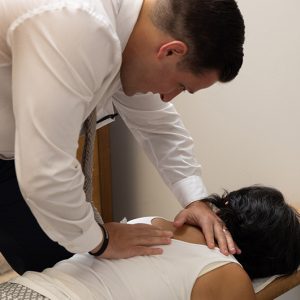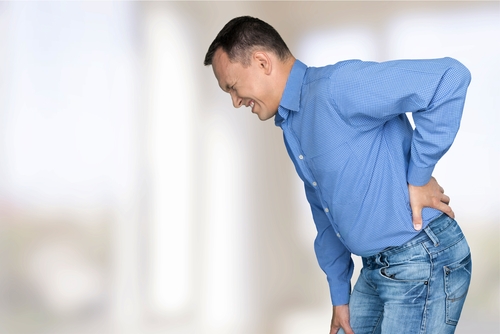Lasting Relief from Back Problems:
In the realm of musculoskeletal health, back problems are pervasive and often debilitating, affecting millions of individuals worldwide. Traditional approaches to back pain management primarily focus on addressing symptoms rather than identifying and rectifying the root cause. However, a revolutionary perspective has emerged in the form of Upper Cervical Spine Care, offering a unique and effective solution for those seeking lasting relief from back issues.
Understanding the Upper Cervical Spine:
The upper cervical spine comprises the first two vertebrae of the neck, known as the atlas (C1) and axis (C2). This region is crucial as it houses the delicate brainstem, the gateway between the brain and the rest of the body. Misalignments or subluxations in the upper cervical spine can disrupt communication between the brain and the body, leading to a cascade of health issues, including back problems.
The Interconnected Nature of the Spine:
The spine functions as a unified system, and any disruption in one part can affect the entire structure. Upper cervical misalignments, though seemingly unrelated to lower back issues, can have a profound impact on overall spinal health. The nervous system controls and coordinates every bodily function, and misalignments in the upper cervical spine can result in altered signals that contribute to back pain. Now, let us look at the righting reflex, which helps keep the body balanced and how an imbalanced body could lead to back pain.
The Righting Reflex, The Brain Wants to be Level:
The righting reflex is an automatic response that helps individuals maintain an upright and balanced posture. It involves a complex interplay of sensory information, motor control, and coordination to ensure that the head, torso, and limbs are aligned in a way that supports stability in the brain and the body However, if there are issues with the righting reflex or if it is not adequately supported, it can lead to poor posture habits, which may contribute to back pain in the following ways:
- Poor Alignment: The righting reflex is essential for maintaining proper alignment of the spine. If this reflex is compromised, individuals may adopt poor postures that place increased stress on the spine. Over time, this can contribute to misalignments and potential discomfort or pain in the back.
- Muscle Imbalances: The righting reflex involves the activation of various muscle groups to achieve and maintain an upright position. If there are imbalances in these muscles, it can result in uneven forces acting on the spine. Certain muscles may become overactive and tight, while others may become weak. This imbalance can contribute to strain and discomfort in the back.
- Compensatory Movements: In the absence of a well-functioning righting reflex, individuals may develop compensatory movements to maintain balance. These compensations can lead to overwhelming weight on specific areas of the spine, potentially causing pain and discomfort over time.
- Reduced Core Stability: The righting reflex relies on the engagement of core muscles to support the spine and maintain an upright posture. If there is a lack of core stability, the spine may be more susceptible to stress and strain, increasing the risk of back pain.
- Adaptive Changes: Chronic disruptions in the righting reflex can lead to adaptive changes in movement patterns and posture. These adaptations may contribute to abnormal habits, putting additional stress on the spine and contributing to the development or exacerbation of back pain.
To address back pain related to the righting reflex, interventions may include exercises and activities that enhance your service of movement, balance, and core stability. Upper Cervical Spine Care can be valuable maintaining a healthier musculoskeletal system and reducing the risk of back pain associated with issues in the righting reflex.
 How Upper Cervical Spine Care Works:
How Upper Cervical Spine Care Works:
Upper Cervical Spine Care involves precise and gentle adjustments to correct misalignments in the atlas and axis vertebrae. Unlike traditional chiropractic adjustments, these corrections are highly specific and tailored to everyone’s unique anatomy. By realigning the upper cervical spine, communication between the brain and the body is restored, allowing the nervous system to function optimally.
Benefits of Upper Cervical Spine Care for Back Problems:
- Addressing the Root Cause: Rather than merely alleviating symptoms, Upper Cervical Spine Care seeks to identify and correct the underlying cause of back problems. This approach promotes long-term relief and addresses the issue at its source.
- Holistic Healing: Upper Cervical Spine Care recognizes the interconnectedness of the body and focuses on overall spinal health. By restoring proper alignment in the upper cervical spine, the entire spinal column benefits, promoting a holistic approach to healing.
- Reduced Pain and Discomfort: Patients often report a significant reduction in back pain and discomfort after receiving Upper Cervical Spine Care. The restored communication between the brain and the body contributes to improved function and reduced pain.
- Improved Posture and Mobility: Correcting misalignments in the upper cervical spine can positively impact posture and mobility. As the spine regains its proper alignment, individuals often experience improved range of motion and better posture, further reducing the risk of future back problems.
- Personalized Treatment Plans: Each patient’s anatomy and health history are unique, and Upper Cervical Spine Care recognizes this diversity. Practitioners tailor treatment plans to address individual needs, ensuring a personalized and effective approach to care.
Upper Cervical Care has been proven to transform back problems, from nagging pain to severe issues. Here are a just a few case studies and success stories for you to read over.
Case Studies and Success Stories:
To underscore the efficacy of Upper Cervical Spine Care, numerous case studies and success stories highlight the transformative impact of this approach on individuals suffering from chronic back problems. These real-world examples serve as compelling evidence of the potential for long-lasting relief and improved quality of life.
Jay’s Story
“After one adjustment 40 years of back pain was gone! After injuring my lower back wrestling for Ohio State, I went to several doctors, physical therapists, acupunctures, and general chiropractic. This route provided only temporary relief, but the pain would always come back. After my first Upper Cervical adjustment with Dr. Drury, my back pain was gone and 4 years later I am still pain free. I go for monthly Upper Cervical checkups to make sure my alignment is holding. Upper Cervical worked when nothing else did.”
Teri’s Story
“Before I became an Upper Cervical patient in 2006, it was not unusual for me to miss work a week at a time, because of my back pain. I had been to all kinds of medical doctors, general chiropractors, neurologist orthopedic surgeons, osteopaths, and acupuncturists. I just kept getting worse. My first Upper Cervical adjustment brought immediate relief from the pain I walked in with that day. After about six months under Upper Cervical Care, I missed only an occasional day of work because of back pain. I believe if I had not received Upper Cervical Care, I would be totally disabled today. Now, I’m functional. I’m working full-time, and enjoying my life. I consider upper Cervical Care to be the central part of my physical care, and I will be forever grateful.

Conclusion:
As the medical landscape continues to evolve, innovative approaches like Upper Cervical Spine Care are reshaping how we understand and address back problems. By recognizing the integral role of the upper cervical spine in overall spinal health, individuals can embark on a journey toward lasting relief and enhanced well-being. Through precise adjustments and a holistic approach to healing, Upper Cervical Spine Care stands as a beacon of hope for those seeking a solution to their back problems.
If you could avoid pain, surgery, and harmful medications, would you do it? Upper Cervical Spine Care can provide that relief. Your journey to a pain free life is just a phone call or e-mail away. We have offices in Charlotte, and Wilmington N.C., and Nashville, TN.




